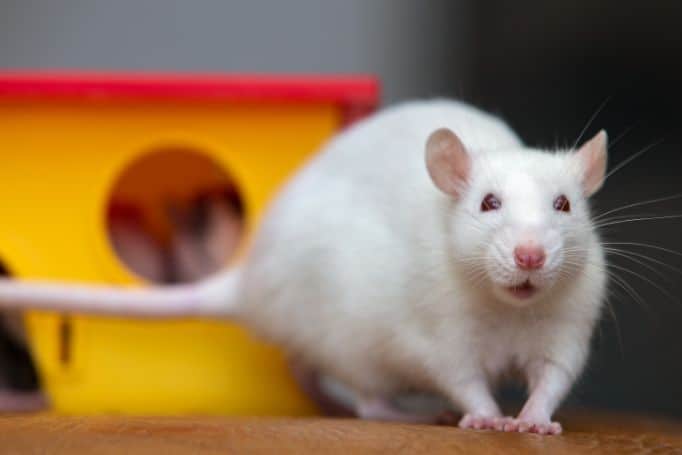Rats are one of the most common household pets. They are small, intelligent, and sociable animals that require proper care and attention just like any other pet.
As a rat owner, I have seen many rats wag their tails, and it always sparks curiosity among pet owners. In this blog post, I will explain the reasons behind rats wagging their tails.
Understanding rat behavior is essential for pet owners, as it helps them provide proper care and attention. For instance, knowing why rats wag their tails can help owners identify their pet’s mood and respond appropriately.

Types of Tail Wagging in Rats
Rats wag their tails in different ways, which can either be normal or abnormal. Understanding the difference between the two types of tail wagging is crucial for identifying a rat’s mood.
Normal Tail Wagging
Normal tail wagging in rats is a sign of happiness or excitement. When a rat is happy, it will wag its tail side to side in a rhythmic pattern.
This type of tail wagging is usually accompanied by other body movements, such as bruxing (grinding of teeth) and boggling (rapid eye movement).
Abnormal Tail Wagging
Abnormal tail wagging in rats is a sign of distress or discomfort. When a rat is uncomfortable, it will wag its tail rapidly, almost like a vibration.
This type of tail wagging is usually accompanied by other signs of distress, such as hunching, hiding, or biting.
Comparison Between Normal and Abnormal Tail Wagging
While normal and abnormal tail wagging in rats may look similar, the context in which they occur differs. Normal tail wagging occurs when a rat is happy, while abnormal tail wagging occurs when a rat is uncomfortable.
Reasons Behind Rats Tail Wagging
Rats wag their tails for various reasons, including communication, emotions, conveying aggression, warning signaling, and mating behavior.
Communication
Rats use tail wagging as a means of communication with other rats. For instance, when a rat encounters another rat, it will wag its tail side to side to communicate that it is friendly and non-threatening.
Emotions
Rats wag their tails when they are happy or excited. They may also wag their tails when they are playing or interacting with their owners.
Conveying Aggression
Rats may also wag their tails as a sign of aggression. When a rat feels threatened or uncomfortable, it may wag its tail rapidly to convey a warning to the other rat.
Warning Signaling
Rats may also wag their tails as a warning signal to predators. When a rat feels threatened by a predator, it may wag its tail in a way that communicates aggression, warning the predator to back off.
Mating Behavior
Rats also wag their tails during mating behavior. Male rats wag their tails side to side to communicate their interest in mating, while female rats wag their tails up and down to signal their readiness to mate.
Physical Factors Affecting Rat Tail Wagging
Several physical factors can affect rat tail wagging, including age, genetics, and environment.
Age
Young rats tend to wag their tails more often than older rats. As rats age, their tail wagging becomes less frequent.
Environment
The environment in which a rat lives can also affect its tail wagging behavior. Rats living in stressful or uncomfortable environments may wag their tails more frequently than rats living in comfortable environments.
Conclusion
In conclusion, rats wag their tails for various reasons, including communication, emotions, conveying aggression, warning signaling, and mating behavior.
Understanding why a rat wags its tail is crucial for identifying its mood and responding appropriately. Physical factors such as age, genetics, and environment also play a role in rat tail wagging behavior.
As rat owners, it is essential to understand rat behavior to provide proper care and attention to these intelligent and sociable animals.
- How Long Do American Eskimo Dogs Live? Important Factors and Care Tips - September 29, 2023
- Do American Bulldogs Need Grooming? Essential Tips and Care Guidelines - September 29, 2023
- Do Bengal Cats Enjoy Playing? Essential Tips for Keeping Them Active - September 29, 2023